NURS 3610 Quiz 2 - Questions, Answers and Rationales
Document Content and Description Below
NURS 3610 Quiz 2 - Questions, Answers and Rationales A nurse is observing the electronic fetal heart rate monitor tracing for a client who is at 40 weeks of gestation and is in labor. The nurse shou... ld suspect a problem with the umbilical cord when she observes which of the following patterns? A. Early decelerations B. Accelerations C. Late decelerations D. Variable decelerations Variable decelerations occur when the umbilical cord becomes compressed and disrupts the flow of oxygen to the fetus. * Think VEALCHOP A nurse in the newborn nursery is caring for a group of newborns. Which of the following newborns requires immediate intervention? A. A newborn who is 24 hr post-delivery and has not voided. B. A newborn who is 18 hr post-delivery and has acrocyanosis C. A newborn who is 24 hr post-delivery and has not passed meconium D. A newborn who is 12 hr post-delivery and has a temperature of 37.5C (99.5F) Hyperthermia in the newborn requires immediately intervention. Hyperthermia is typically caused by increased heat production related to sepsis or decreased heat loss. A nurse is assessing a client who is 12hr postpartum and received spinal anesthesia for a cesarean birth. Which of the following findings requires immediate intervention by the nurse? A. Blood pressure 100/70 mmHg B. Headache pain rated 6 on a scale of 0 to 10 C. Respiratory rate 10/min D. Urinary output 30mL/hr A client who has received spinal anesthesia is at risk for respiratory depression and hypotension. A respiratory rate of 10/min indicates bradypnea and requires immediate intervention. A nurse is caring for a client who has just delivered her first newborn. The nurse anticipates hyperbilirubinemmia due to Rh incompatibility. The nurse should understand that hyperbilirubinemia occurs with Rh incompatibility for which of the following reasons? A. The client's blood does not contain the Rh factor, she she produces anti-Rh antibodies that cross the placental barrier and cause hemolysis of red blood cells in newborns. B. The client' blood contains the Rh factor and the newborn's does not and antibodies that destroy red blood cells are formed in the fetus. C. The client has a history of receiving a transfusion with Rh-negative blood. D. The client's anti-A and anti-B antibodies cross the placenta and cause the destruction of the fetal red blood cells. If the Rh-negative client has been exposed to Rh-positive fetal blood, she will produce antibodies against Rh factor. These antibodies can cross the placenta and destroy the red blood cells of the Rh-positive fetus. This accelerated rate of red blood cell destruction results in the increased release of bilirubin. The newborn's serum bilirubin level can rise quickly. A nurse is teaching a newborn's parent to care for the umbilical cord stump. Which of the following instructions should the nurse include? A. Wash the cord daily with mild soap and water. B. Cover the cord with the diaper. C. Apply petroleum jelly to the cord stump. D. Give a sponge bath until the cord stump falls off. Immersing the umbilical cord stump in water can delay the process of drying, separation, and healing. Sponge baths are appropriate until the stump falls off. A nurse is caring for a client who is postpartum. The client tells the nurse that the newborn's maternal grandmother was born deaf and asks how to tell if her newborn hears well. Which of the following statements should the nurse make? A. "There is no need to worry about that. Most forms of hearing loss are not inherited." B. "Look at how she looks at you when you speak. That's a good sign." C. "We do routine hearing screenings on newborns. You'll know the results before you leave the hospital." D. "The best way to determine if your baby can hear is to clap your hands loudly and see if she startles." Most states mandate hearing screening for all newborns. The two tests in use do not diagnose hearing loss, but determine whether or not a newborn requires further evaluation. A nurse is caring for a client who is beginning to breastfeed her newborn after delivery. The new mother states, "I don't want to take anything for pain because I am breastfeeding." Which of the following statements should the nurse make? A. "You need to take pain medications so you are more comfortable." B. "We can time your pain medication so that you have an hour or two before the next feeding." C. "All medications are found in breast milk to some extent." D. "You have the option of not taking pain medication if you are concerned." This answer provides the client an option that allows for administration of pain medication but minimizes the effect it will have on the newborn while breastfeeding. A nurse is completing discharge instructions for a new mother and her 2-day-old newborn. The mother asks, "How will I know if my baby gets enough breast milk?" Which of the following responses should the nurse make? A. "Your baby should have a wake cycle of 30 to 60 minutes after each feeding." B. "Your baby should wet 6 to 8 diapers per day." C. "Your baby should burp after each feeding." D. "Your baby should sleep at least 6 hours between feedings." Newborns should wet 6 to 8 diapers per day. This is an indication that the newborn is getting enough fluids. A nurse is caring for a client who had a vaginal delivery 2 hr ago. Which of the following actions should the nurse anticipate in the care of this client? (SATA) A. Document fundal height. B. Massage a firm fundus. C. Observe the lochia during palpation of fundus. D. Determine whether the fundus is midline. E. Administer methylgonovine maleate if uterus is boggy. A nurse is caring for a client who is 2 hr postpartum. The nurse notes that the client soaked a perineal pad in 10 min, the client's skin color is ashen, and states she feels weak and light headed. After applying oxygen via nonrebreather face mask at 10 L/min which of the following actions should the nurse take next? A. Insert an indwelling urinary catheter. B. Administer oxytocin by continuous IV infusion. C. Tilt the client onto her right side with her legs elevated to at least 30. D. Massage the client's fundus to promote contractions. A soaked perineal pad in less than 15 min, ashen skin color, and report of weakness and light headedness can indicate that the client is at greatest risk for hypovolemic shock. Therefore, the next action the nurse should take is to massage the client's fundus to expel blood clots and promote uterine contraction to stop the bleeding. A nurse is assessing a client who is 8 hr postpartum and multiparous. Which of the following findings should alert the nurse to the client's need to urinate? A. Moderate lochia rubra B. Fundus three fingerbreadths above the umbilicus C. Moderate swelling of the labia D. Blood pressure 130/84 mmHg A full bladder can raise the level of uterine fundus and possibly deviate it to the side. A nurse is caring for a client who is 5 hr postpartum following a vaginal birth of a newborn weighing 9 lb 6 oz (4252g). The nurse should recognize that this client is at risk for which of the following postpartum complications? A. Puerperal infections B. Retained placental fragments C. Thrombophlebitis D. Uterine atony A uterus that is over distended, such as from a macrosomic fetus, has an increased risk of uterine atony. A nurse is caring for a preterm newborn who is in an incubator to maintain a neutral thermal environment. The father of the newborn asks the nurse why this is necessary. Which of the following responses should the nurse make? A. "Preterm newborns have a smaller body surface area than normal newborns." B. "The added brown fat layer in a preterm newborn reduces his ability to generate heat." C. "Preterm newborns lack adequate temperature control mechanisms." D. "The heat in the incubator rapidly dries the sweat of preterm newborns." Preterm newborns have poor body control of temperature and need support to avoid losing heat. They require an external heat source, such as an incubator. A nurse is caring for a newborn 4 hr after birth. Which of the following actions should the nurse include in the plan of care to prevent jaundice? A. Begin phototherapy B. Initiate early feeding C. Suction excess mucus with bulb syringe D. Prepare for an exchange blood transfusion Prevention of jaundice can be facilitated best by early and frequent feeding, which stimulates intestinal activity and passage of meconium. Jaundice occurs due to elevated serum bilirubin, which is excreted primarily in the newborn's stool. Physiologic jaundice manifests after 24 hr and is considered benign. However, bilirubin may accumulate to hazardous levels and lead to a pathologic condition. A nurse is assisting a client who is postpartum with her first breastfeeding experience. When the client asks how much of the nipple she should put into the newborn's mouth, which of the following responses should the nurse make? A. "You should place your nipple and some of the areola into her mouth." B. "Babies know instinctively how much of the nipple to take into their mouth." C. "Your baby's mouth is rather small so she will only take part of the nipple." D. "Try to place the nipple, the areola, and some breast tissue beyond the areola into her mouth." Placing the nipple and 2 to 3 cm of areolar tissue around the nipple into the baby's mouth aids in adequately compressing the milk ducts. This placement decreases stress on the nipple and prevents cracking and soreness. A nurse on a labor unit is admitting a client who reports painful contractions. The nurse determines that the contractions have duration of 1 min and a frequency of 3 min. The nurse obtains the following vital signs: fetal heart rate 130/min, maternal heart rate 128/min and maternal blood pressure 92/54 mmHg. Which of the following is the priority action for the nurse to take? A. Notify the provider of the findings. B. Position the client with one hip elevated. C. Ask the client if she needs pain medication. D. Have the client void. Based on Maslow's hierarchy of needs, the client's need for an adequate blood pressure to perfuse herself and her fetus is a physiological need that requires immediate intervention. Supine hypotension is a frequent cause of low blood pressure in clients who are pregnant. By turning the client on her side and retaking her blood pressure, the nurse is attempting to correct the low blood pressure and reassess. A nurse is caring for a client who is 2 days postpartum, is breastfeeding, and reports nipple soreness. Which of the following measures should the nurse suggest to reduce discomfort during breastfeeding? (SATA) A. Apply breast milk to the nipples before each feeding. B. Place breast pads inside the nursing bra. C. Massage the breasts and nipples prior to feeding. D. Start breastfeeding with the nipple that is less sore. E. Change the infant's position on the nipple. A nurse is discussing postpartum depression with newly licensed nurse. Which of the following statements indicates an understanding of this disorder? [Show More]
Last updated: 1 week ago
Preview 4 out of 17 pages
Instant download

Loading document previews ...
Buy this document to get the full access instantly
Instant Download Access after purchase
Add to cartInstant download
Reviews( 0 )
Document information
Connected school, study & course
About the document
Uploaded On
Jun 16, 2024
Number of pages
17
Written in
Additional information
This document has been written for:
Uploaded
Jun 16, 2024
Downloads
0
Views
15



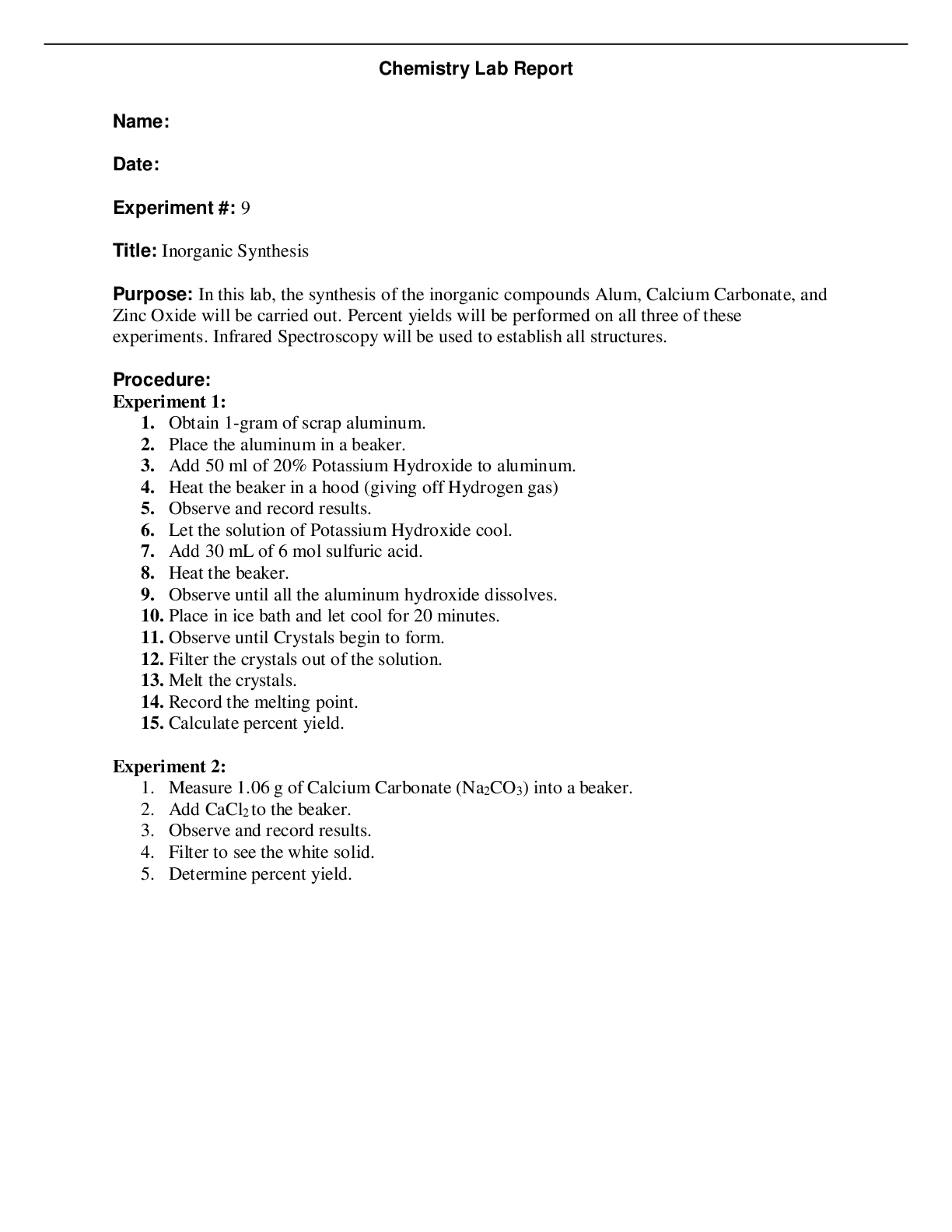
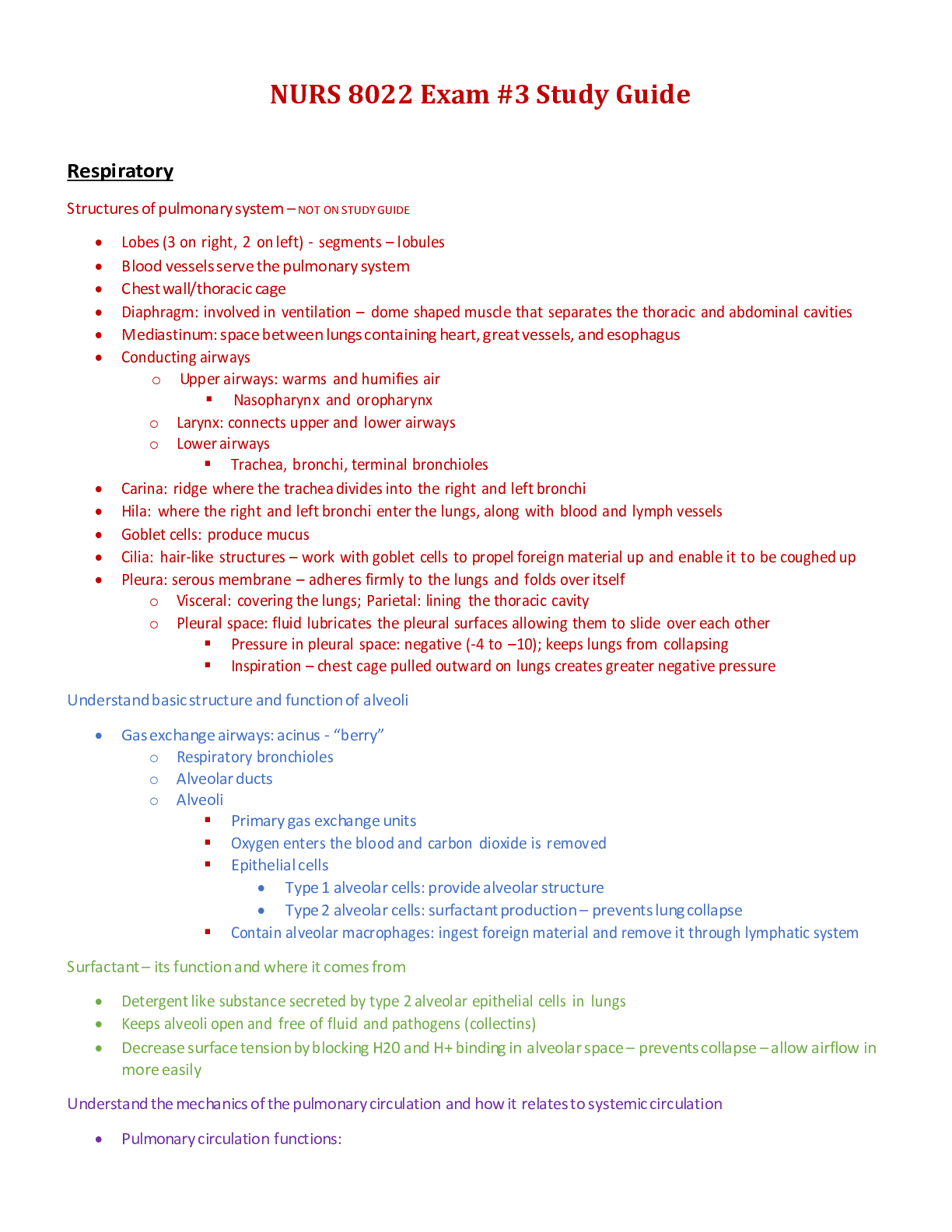

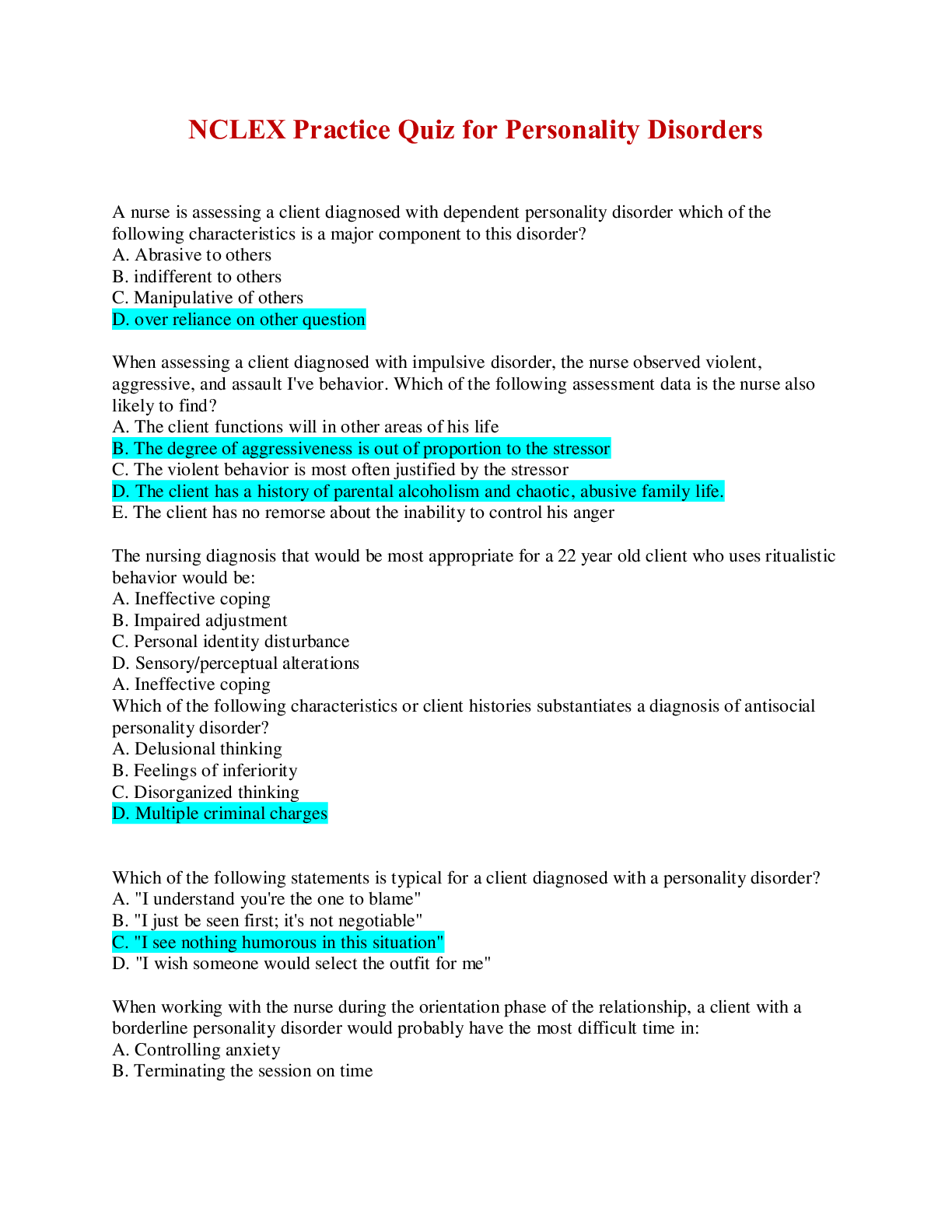



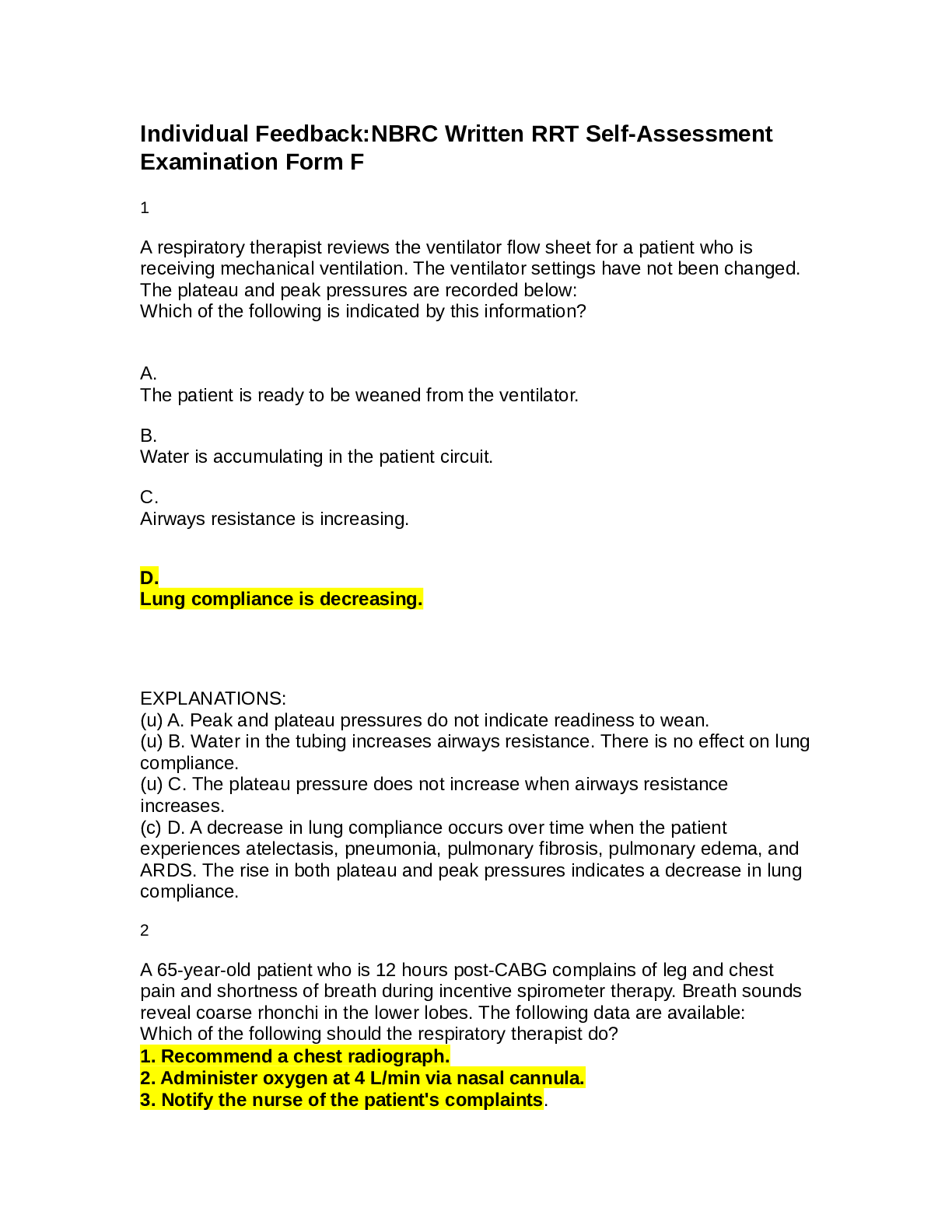
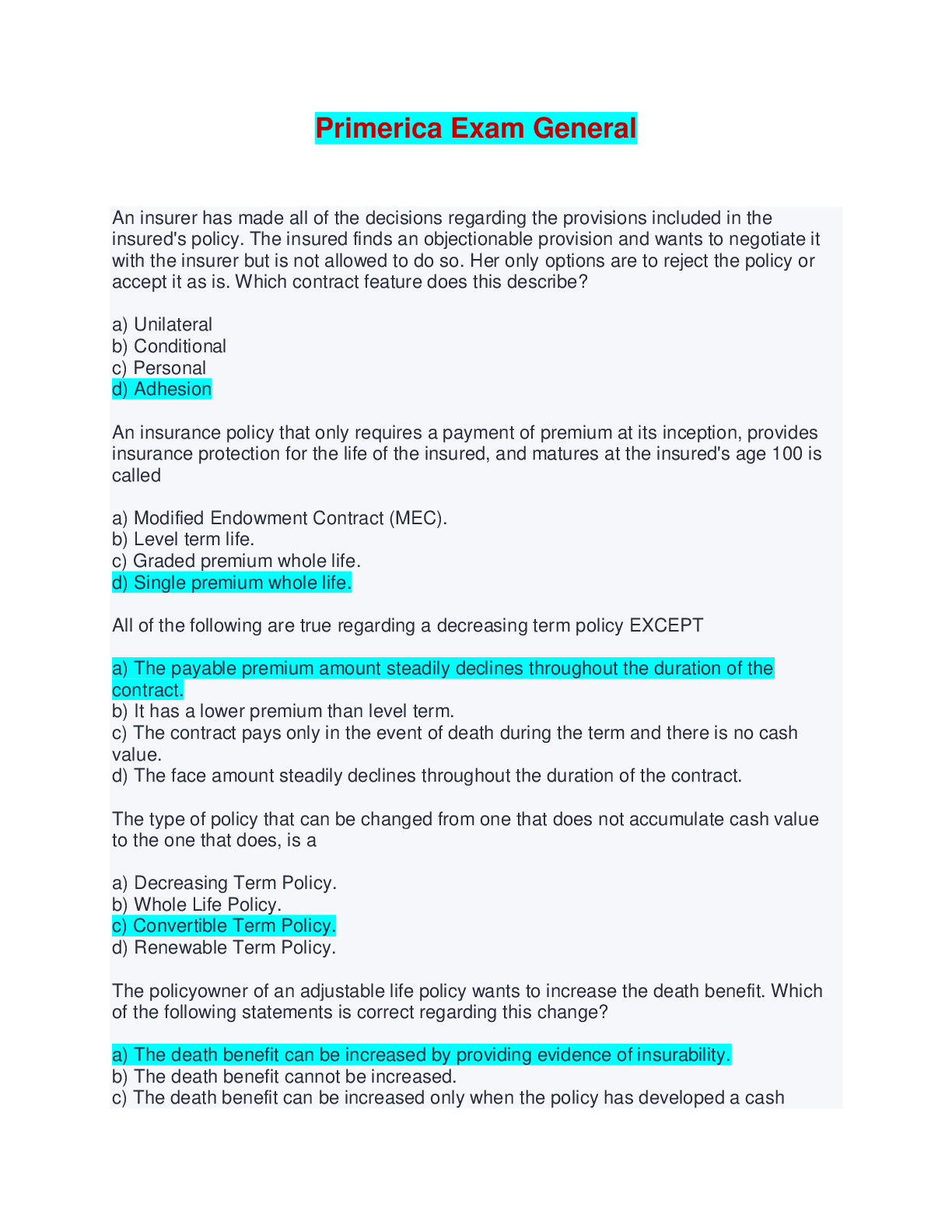

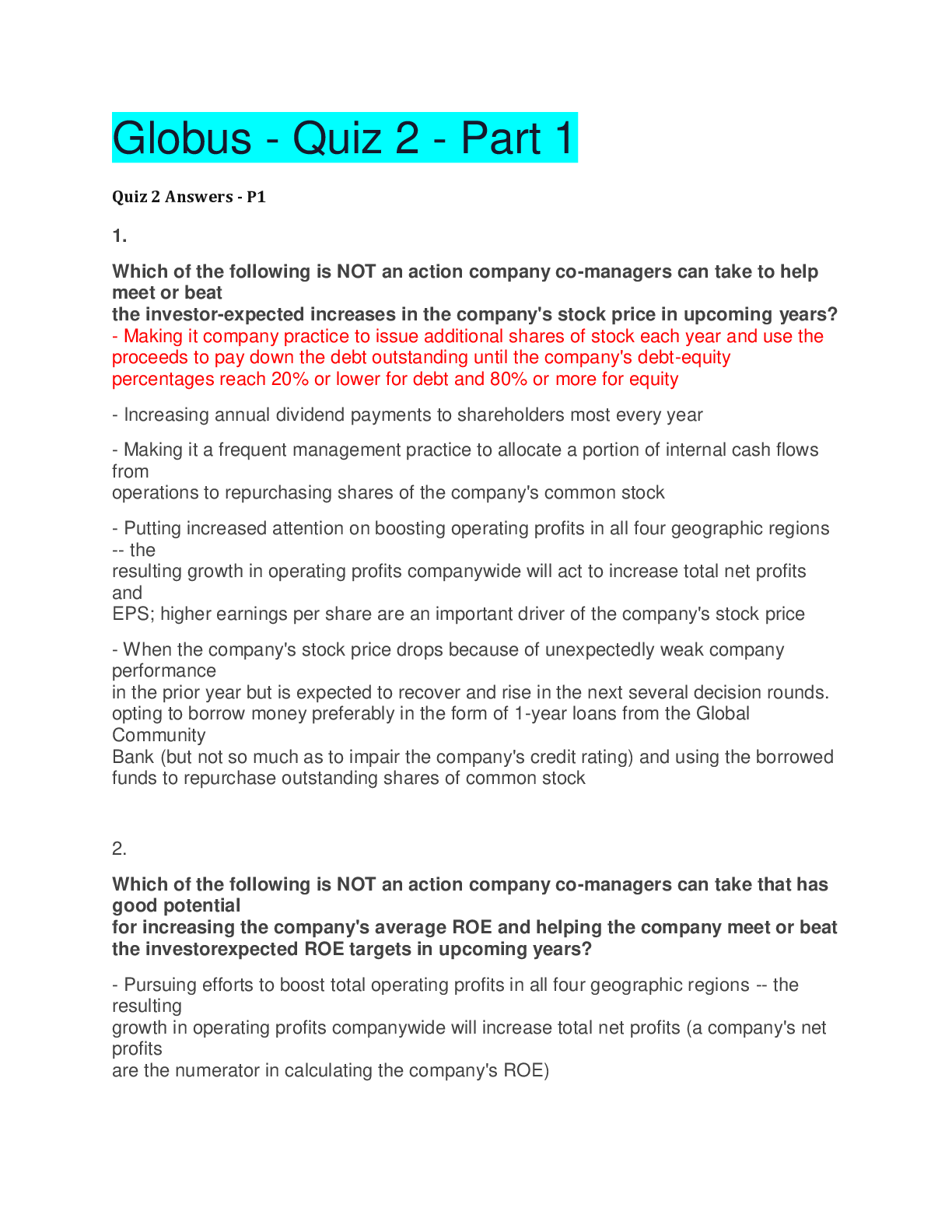
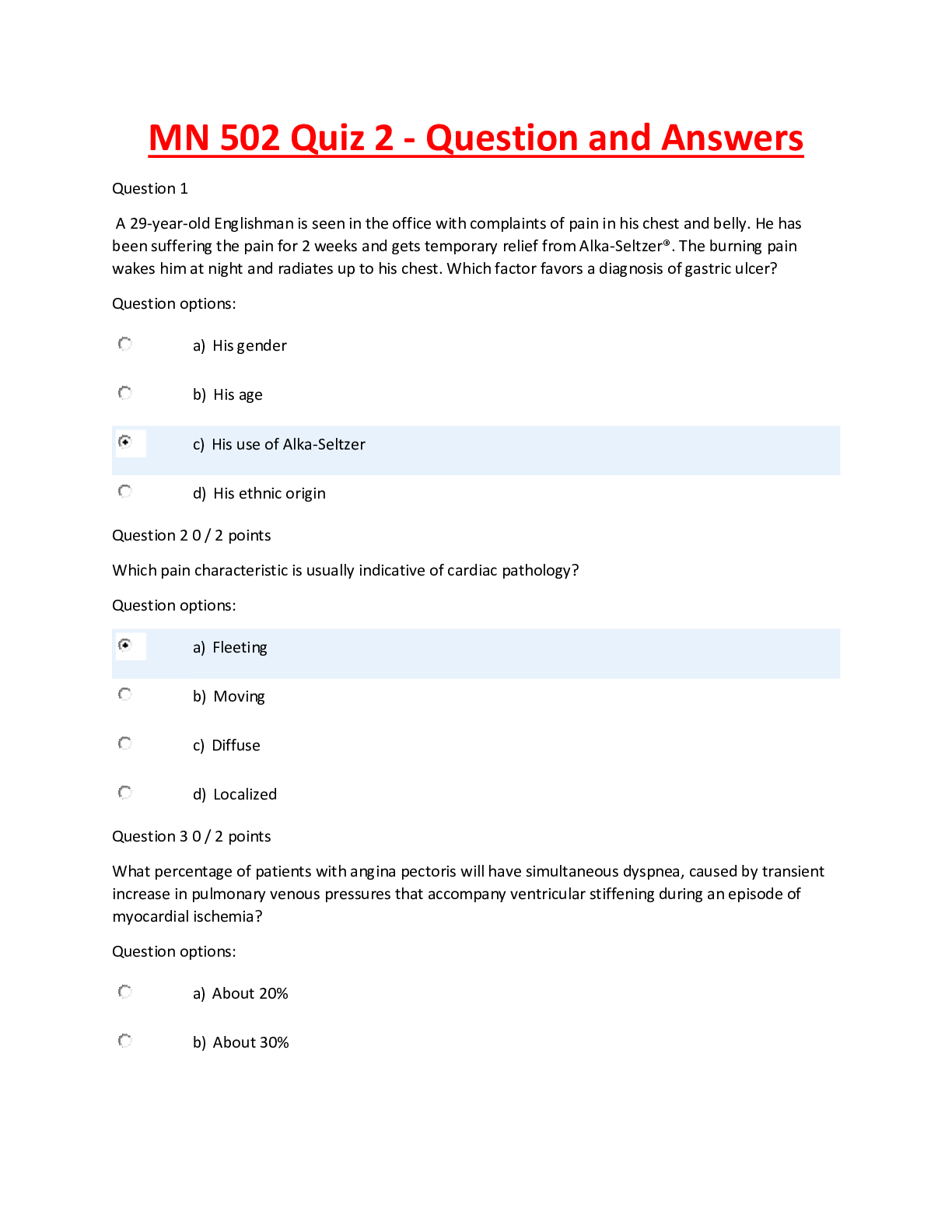
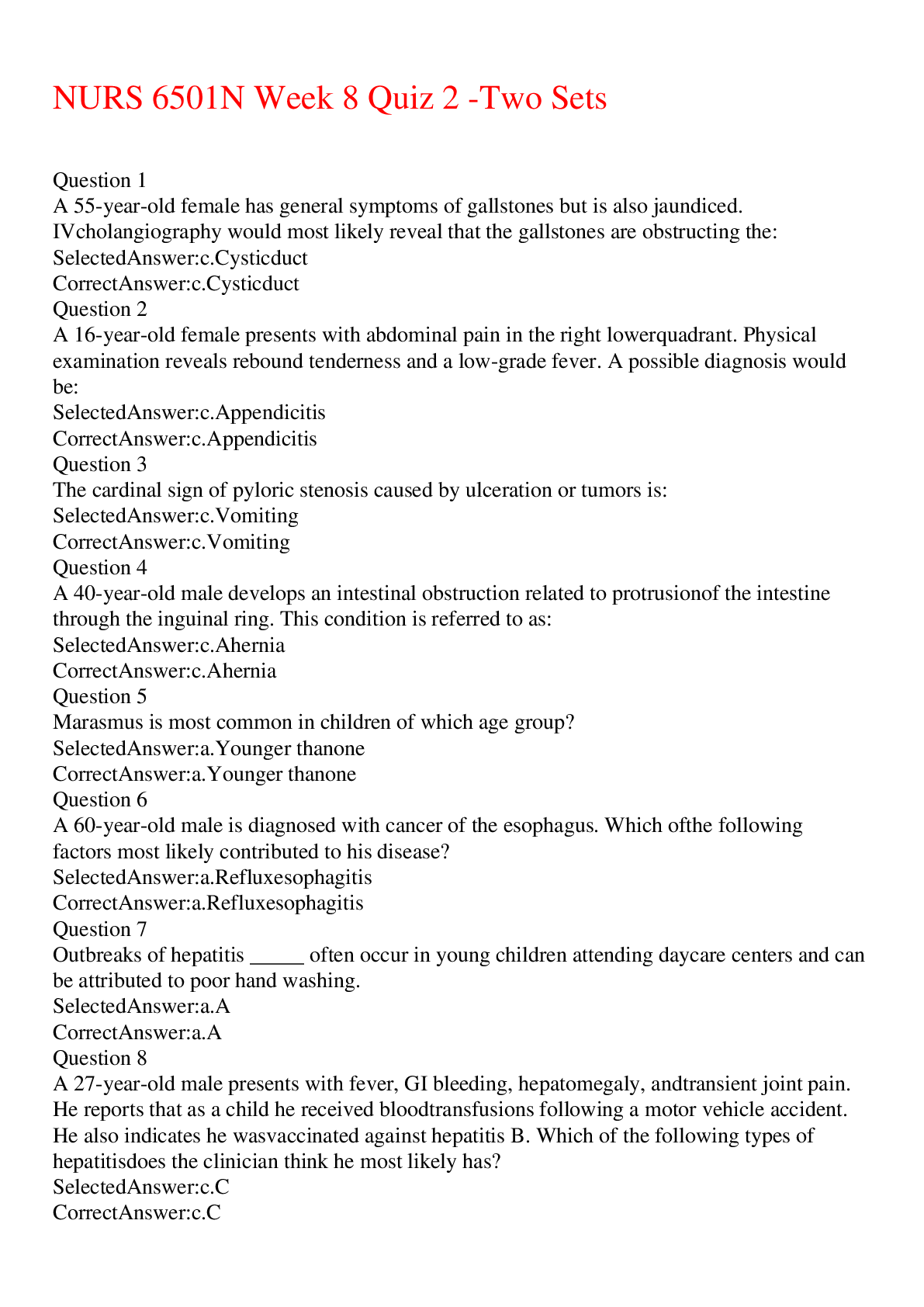
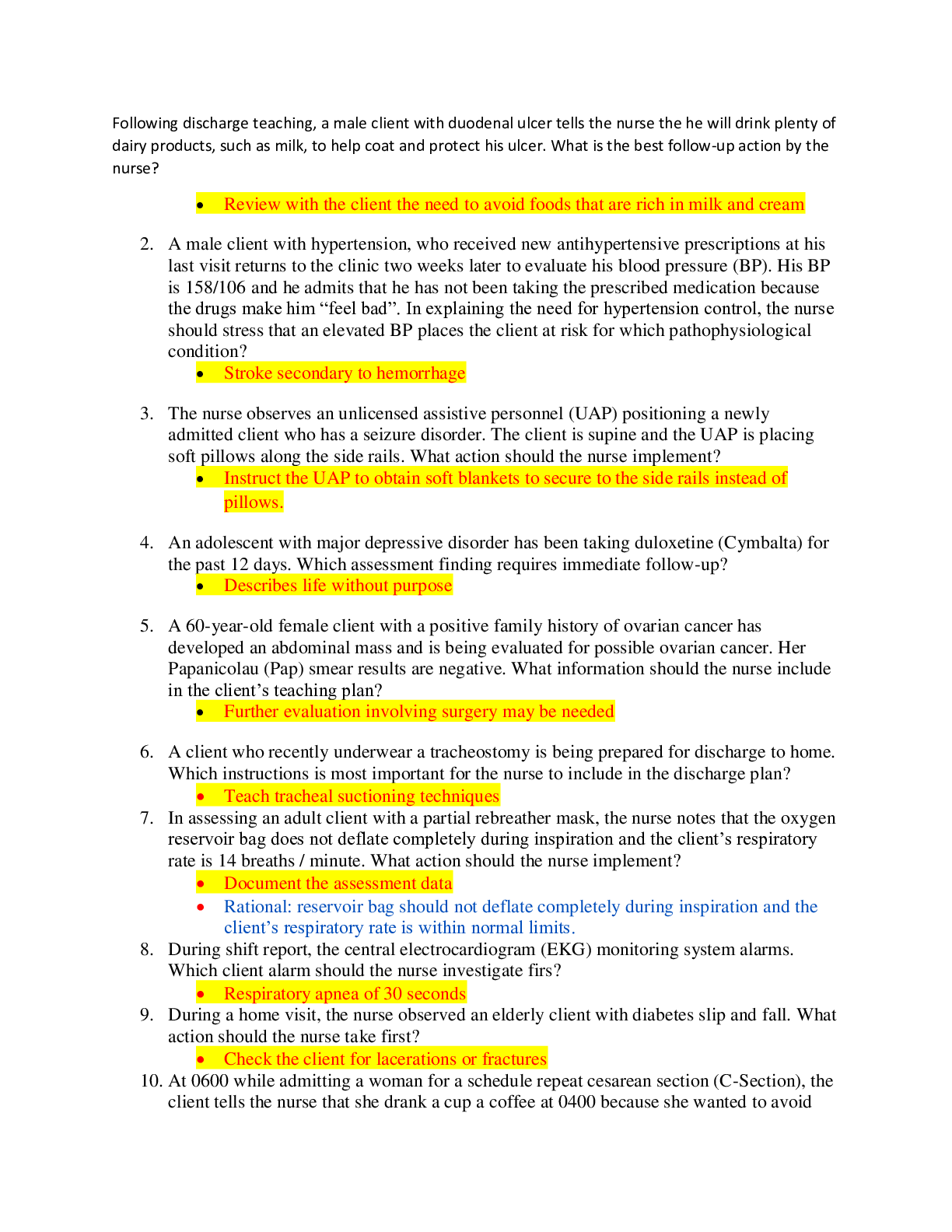
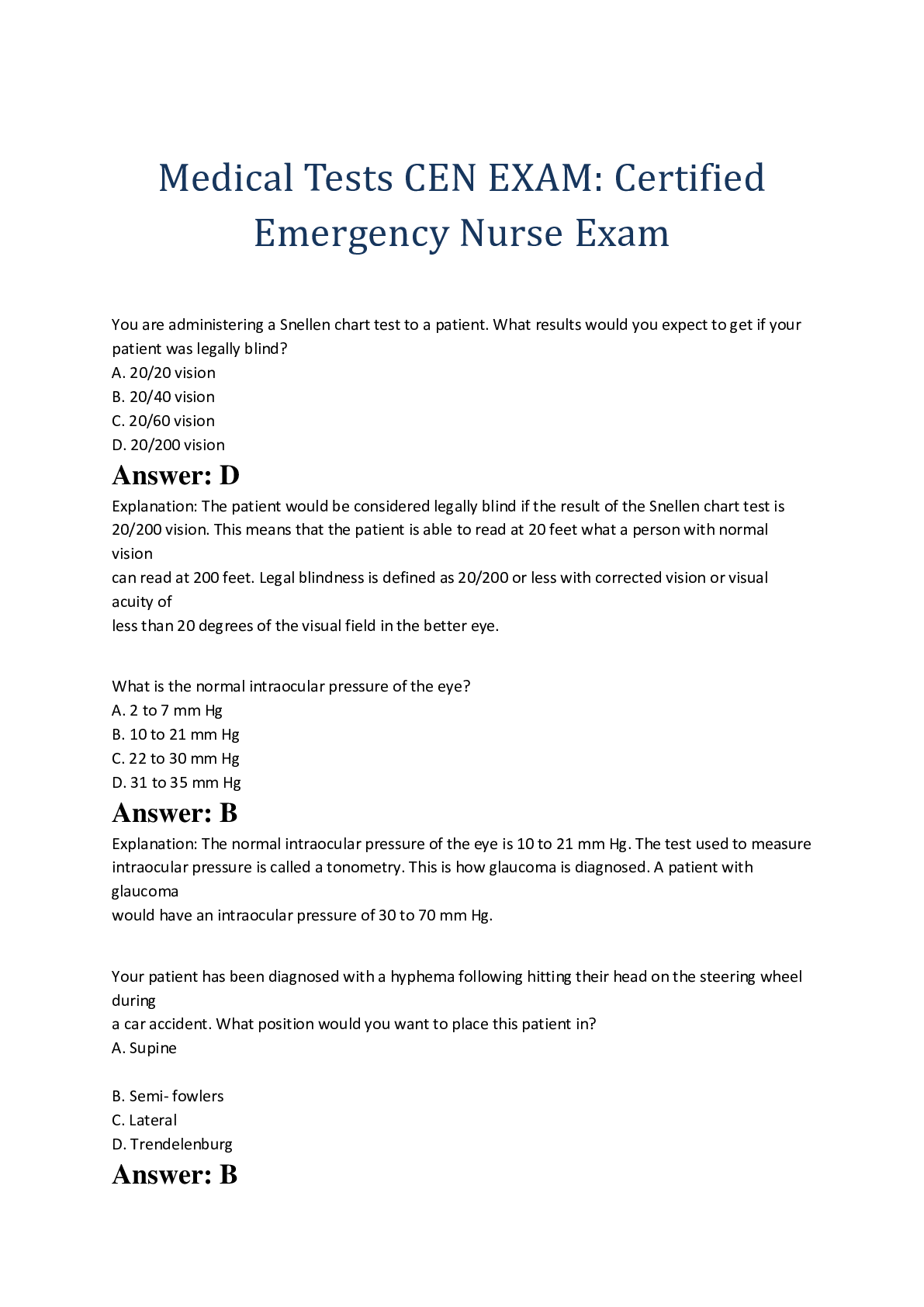


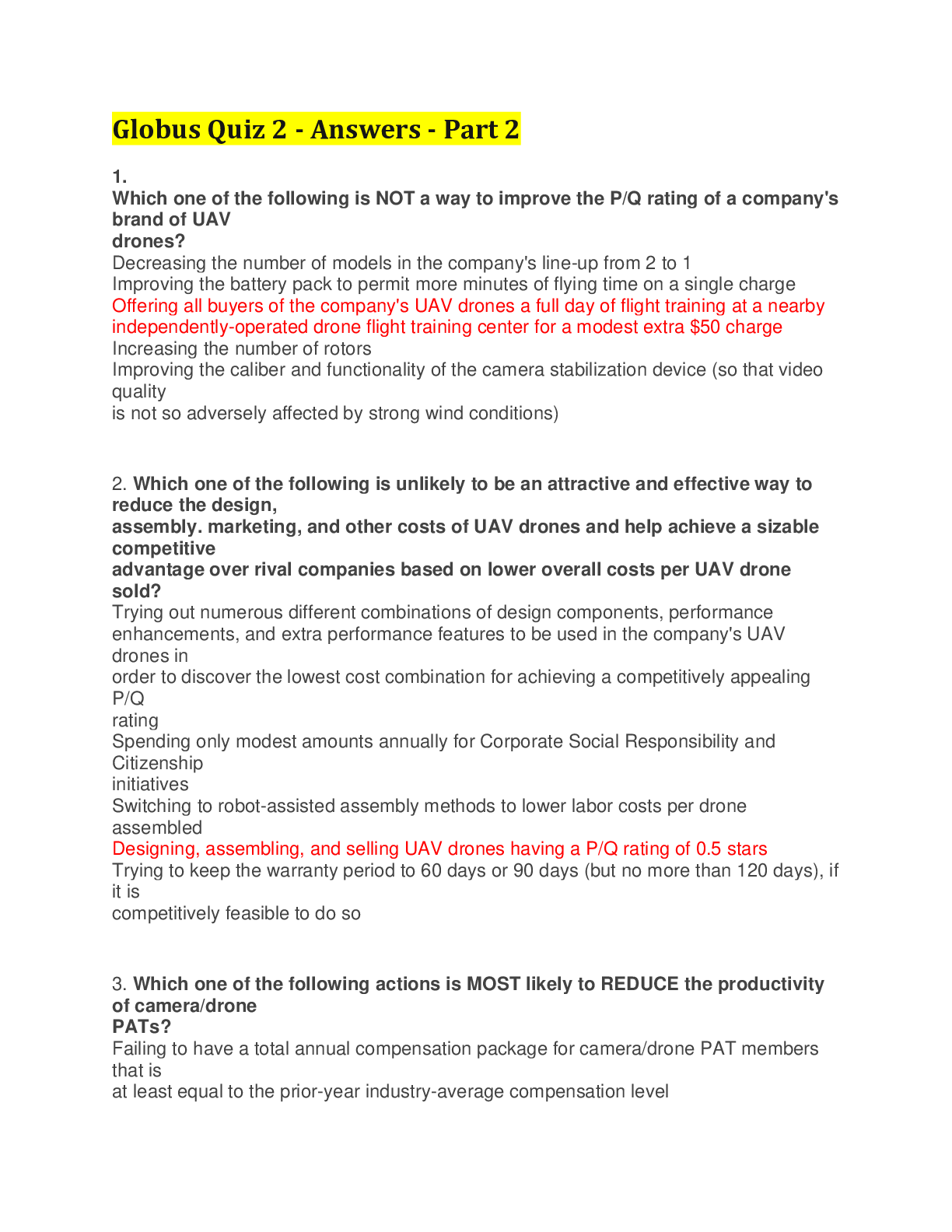
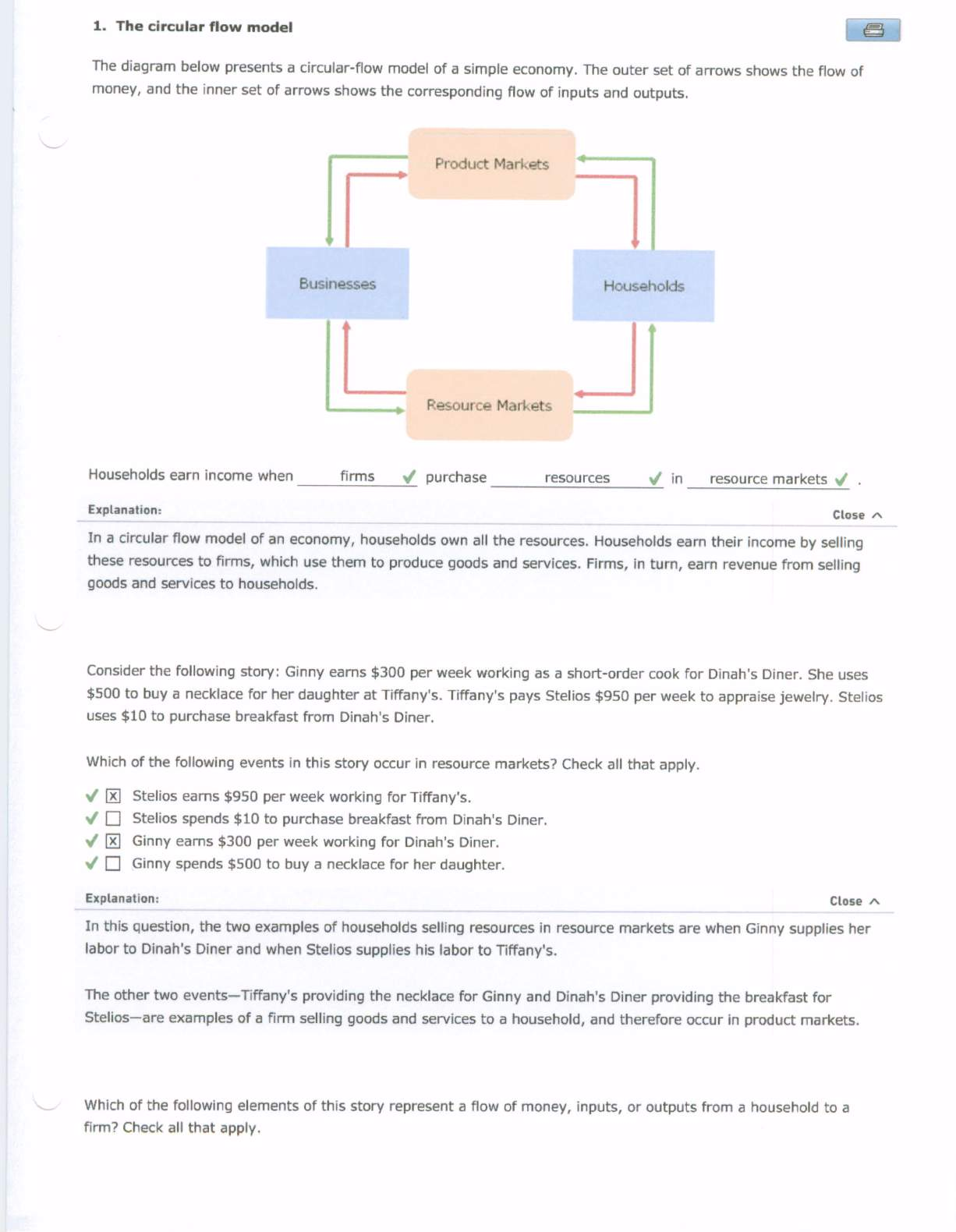

.png)


